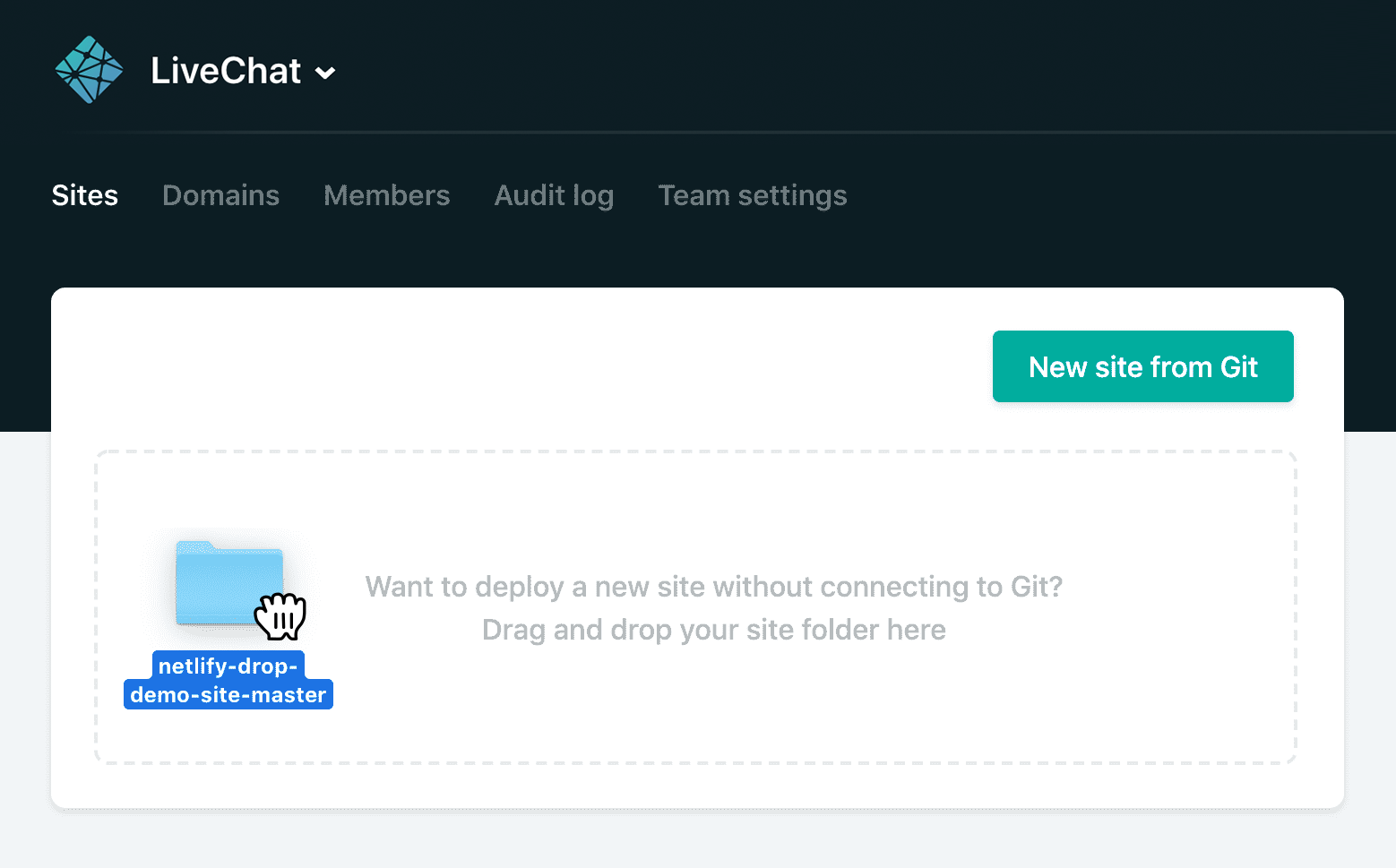
Creating widgets in our Developer Console takes only a few steps, but you can speed up the process even more. A way to do that is by deploying your app on Netlify with just two actions: drag and drop.
Widgets are web applications that bring new functionalities to the LiveChat Agent App. They can be displayed in different locations of the Agent App, for example, in the Details section. To learn more, check out the Building LiveChat apps guide. If you're interested in creating your own widget, click for the instructions on how to make one.
Choosing the right hosting platform
When creating a widget in LiveChat Developer Console, you're asked to enter your app URL. For that purpose, you need to host your app on some dedicated platform. You may already have your favorite one, but we'd like to show you something extremely efficient for your projects.
What is Netlify?
Netlify is a secure, online platform that provides powerful features for application hosting: from web development to API integrations. It's the perfect solution for creating and deploying web projects and static websites, without the need for complex server configurations or tedious manual deployments. With Netlify, web developers can easily build, test, and deploy any web project or site!
The simplicity of Netlify Drop
Netlify Drop allows you to deploy your app or a static website in a fast & easy way, which is helpful if you don't have any prior experience with hosting apps using online tools. With Netlify Drop, all you need to do is drag the folder with your app and drop in the dedicated location on your Netlify account. It's really that simple!
Why use the Netlify platform?
Saving time and effort is the obvious benefit, but not the only one, though. Netlify welcomes you with a great starter for free. It includes making sure that your website is safe, has a custom domain name, and thanks to the Netlify Build infrastructure, you can connect Netlify with your Git repository for a seamless push experience. Netlify also offers a great feature called Deploy Previews, which is extremely helpful for testing your changes before you put them on production.
Another useful feature of this platform is its continuous deployment capabilities. With every push to your repository, your site updates automatically, cutting down on the number of manual deployments you need to do. And if you need to run specialized tasks on your server: background functions have got you covered. Plus, Netlify's custom domains feature lets you brand your sites with your own domain names, making them feel professional and trustworthy.
See for yourself
If you're still not sure, perhaps you should try Netlify yourself. You can create the most basic site folder — even a simple HTML page — and drag-and-drop your site to your Netlify account. You don't even need to sign up if you don't want to yet! It's just that any websites or apps you deploy will be deleted after 24 hours.
How to use Netlify Drop?
By far, you should already know that with Netlify Drop, hosting your widget is quick and extremely simple. Let's put this into practice! Follow these steps and get ready to push your project to production:
- First, make sure your site or app files are ready to be deployed. You should have a folder containing all the necessary files for your deployment.
- Log in to your Netlify account and open menu for the Netlify Drop website. Then, drag and drop your site folder onto the drop zone.
- Wait for Netlify to upload your files and create a new live site for your project. This usually takes just a few moments!
- Once your project is live, you'll be given a unique URL where you can access your project online.
- Now you can share your widget's URL with others, embed it in your website or other online platforms!
And if you'd like to see how to deploy your project to Netlify in an online tutorial, check out our video, where we teach how to perform the drag and drop deployments to Netlify.
You may wonder — if it's so easy to make deploys with drag and drop, what's the case for reverting changes if you accidentally break your site? Don't worry — Netlify has you covered with instant rollbacks. Simply go to the Netlify app home screen, go to the "Deploys" tab, and choose the "publish deploy" button of any stable deploy from your previous production versions. And that's it!
Is Netlify safe?
In short — yes. There are many reasons the Netlify platform is a trusted choice for developers. With its primary focus on static websites, Netlify ensures a robust security framework that safeguards both sites and user data. With features like encrypted data transmission, SSO, and custom access controls, the platform ensures a safe development environment. Also, each user receives a free HTTPS certificate for a domain they deploy. By hosting static sites in the cloud, Netlify eliminates server vulnerabilities, giving developers precise control over their code without the usual maintenance concerns.
If you're curious to know more, check all of Netlify's security features here.
Consider Netlify hosting for global distribution
If you're thinking of scaling up your website or project; you're safe with Netlify. They offer many advanced features helpful for managing both smaller projects and those with much more advanced and complex capabilities.
So, if you're thinking of building something big — consider facilitating the services of Netlify Edge for advanced global code deployments and serverless functions, or Netlify Dev, thanks to which you can locally run your development mimicking the Netlify production environment.
What about you?
Have you got your favorite hosting platform? Let us know what it is! Also, make sure to share your experience if you decide to play with Netlify.


